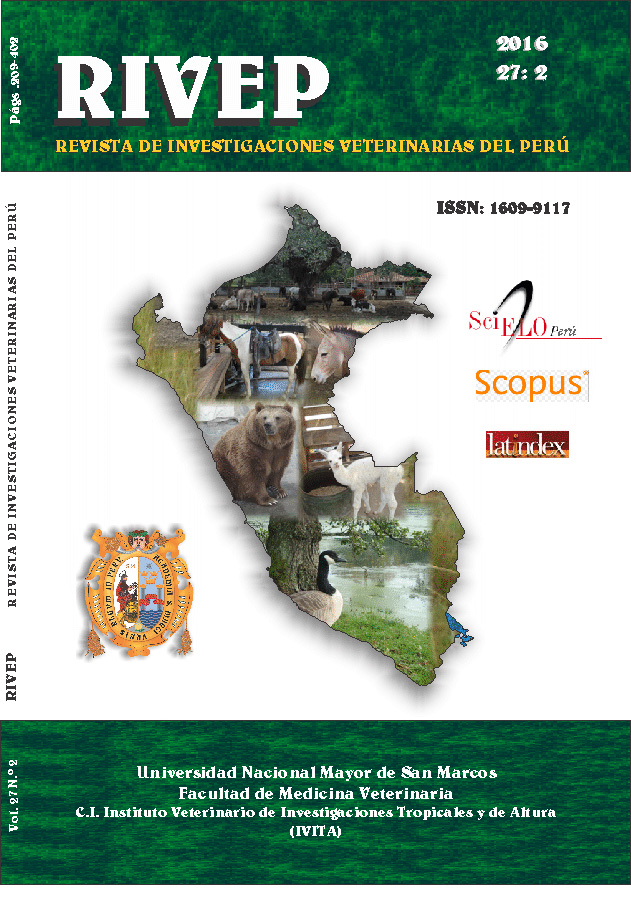Prevalence of paramyxoviruses in bats in six areas of Madre de Dios and Puno, Peru with two levels of anthropogenic disturbance
DOI:
https://doi.org/10.15381/rivep.v27i2.11640Keywords:
Paramyxovirus, bats, Madre de Dios, anthropogenic disturbance, RT-PCRAbstract
The tropical Andes, comprising the Madre de Dios region, are a hotspot for biodiversity conservation. Recent development of the area through paving of the interoceanic highway (IOH) resulted in anthropogenic impacts in the region. This study aimed to identify the prevalence of emerging pathogens of public and animal health importance such as Paramyxoviruses among bats trapped along areas of IOH with different ecological impacts. Samples from six study sites along the IOH were collected from October 2009 to October 2010: three highly disturbed areas and three areas with low disturbance. A site located at the Tambopata National Reserve was selected as an undisturbed environment for control. Bat spleens were tested for Paramyxoviruses by nested PCR targeting the conserved motifs of the polymerase gene. A total of 436 bats from 24 different genera were captured, of which 45 (10.32%; CI 95%: 7.6-13.6%) were positive for Paramyxoviruses. The prevalence was higher in areas with more disturbance than in mildly disturbed areas (15.7 vs. 5.6%, p=0.009). The prevalence in the control area was 8.3%. The species Artibeus planirostris showed the highest infection frequency (37%, 17/45). Three positive bats were adults of the Sturnira lilium species collected from one location in Iberia District. Sequence analysis placed these viruses in the Rubulavirus genera (Mapuera virus). The remaining viruses were related to an unclassified Morbillivirus found in bat samples in Brazil during 2013.Downloads
Downloads
Published
Issue
Section
License
Copyright (c) 2016 Karen Segovia H., Gabriela Gabriela Salmon-Mulanovich, Bruno M. Ghersi, Maria Silva, Lenin Maturrano H., Daniel G. Bausch

This work is licensed under a Creative Commons Attribution-NonCommercial-ShareAlike 4.0 International License.
AUTHORS RETAIN THEIR RIGHTS:
a. Authors retain their trade mark rights and patent, and also on any process or procedure described in the article.
b. Authors retain their right to share, copy, distribute, perform and publicly communicate their article (eg, to place their article in an institutional repository or publish it in a book), with an acknowledgment of its initial publication in the Revista de Investigaciones Veterinarias del Perú (RIVEP).
c. Authors retain theirs right to make a subsequent publication of their work, to use the article or any part thereof (eg a compilation of his papers, lecture notes, thesis, or a book), always indicating the source of publication (the originator of the work, journal, volume, number and date).










